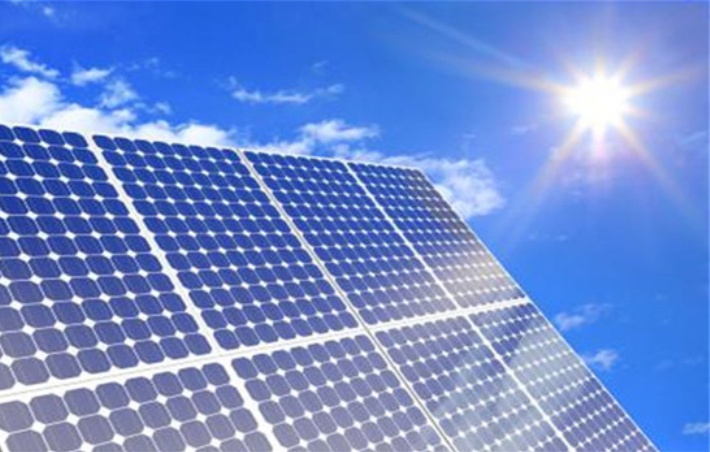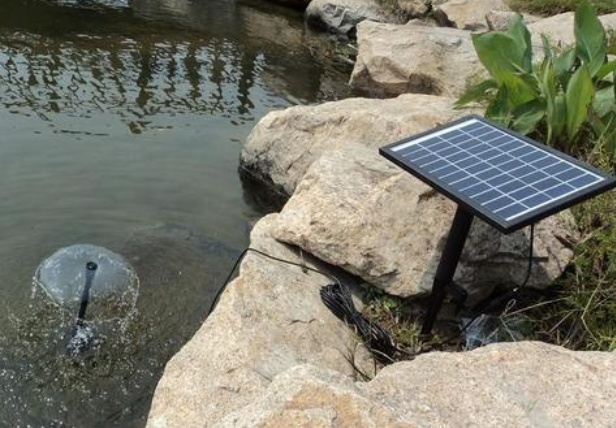Solar water pumps are used in both residential and commercial applications. They offer a clean alternative to fossil fuel-powered windmills and generators. There are two main types of solar water pumps. Surface pumps sit above ground and move water through pipes. These can slowly move large volumes of water. Surface pumps are often found on farms or in large irrigation systems, where water needs to be moved from lakes to fields. Submersible solar water pumps sit underground, but have solar panels attached to the ground. Submersible pumps are used to move water from wells to the surface.
The main difference between solar pumps and conventional pumps is their power source. Solar water pumps rely on solar panels to operate. The solar panels can be built into the device or be a separate structure connected to the pump via electrical wiring. The solar panels then power the device, allowing it to operate independently of any existing electrical system.

Solar pumps range in size from small pumps to power fountains and large pumps for extracting water from underground aquifers. Built-in panels are typically used for smaller pumps, while larger pumps require a separate installation. Photovoltaic power sources have few moving parts and operate reliably. They are safe, silent, and pollution-free. They do not produce any solid, liquid, or gaseous hazardous substances, making them absolutely environmentally friendly. They offer simple installation and maintenance, low operating costs, and are suitable for unmanned operation. They are particularly well-regarded for their high reliability. Their compatibility allows photovoltaic power generation to be combined with other energy sources, allowing for easy expansion of the photovoltaic system as needed. Their high degree of standardization allows for the use of series and parallel connections to meet varying power requirements, resulting in strong versatility. They are environmentally friendly, energy-efficient, and ubiquitous, with solar energy widely available for a wide range of applications.
Characteristics of Various Solar Water Pumps
1. Brushed DC Solar Water Pump:
When the pump is operating, the coil and commutator rotate, while the magnet and carbon brushes do not. The alternating direction of the coil current is achieved by the commutator and brushes, which rotate in tandem with the motor. As the motor rotates, the carbon brushes wear out. After a certain period of operation, the carbon brushes wear out, causing the gap to widen and the noise to increase. After several hundred hours of continuous operation, the carbon brushes no longer function properly.
Advantages: Low price.
2. Brushless DC Solar Water Pump (Motor Type):
Motor-type brushless DC pumps utilize a brushless DC motor and an impeller. The motor shaft is connected to the impeller, and there is a gap between the stator and rotor of the pump. Over time, water can penetrate the motor, increasing the risk of motor burnout.
Advantages: Brushless DC motors are standardized and mass-produced by specialized manufacturers, resulting in relatively low cost and high efficiency.

3. Brushless DC Magnetic Isolation Solar Water Pump:
This brushless DC pump utilizes electronic commutation, eliminating the need for carbon brushes. It features a high-performance, wear-resistant ceramic shaft and sleeve. The sleeve is integrally connected to the magnet through injection molding, preventing wear and tear. This significantly extends the life of the brushless DC magnetic pump. The stator and rotor of this magnetic isolation pump are completely isolated. The stator and circuit board are encapsulated with epoxy resin, making it 100% waterproof. The rotor utilizes permanent magnets, and the pump body is constructed from environmentally friendly materials. This pump offers low noise, a compact size, and stable performance. Various parameters can be adjusted through the stator winding, and it operates across a wide voltage range.
Advantages: Long life, low noise levels below 35dB, and suitable for hot water circulation. The motor's stator and circuit board are encapsulated with epoxy resin and completely isolated from the rotor, making it suitable for underwater installation and completely waterproof. The pump's shaft utilizes a high-performance ceramic shaft for high precision and excellent vibration resistance.
As everything has its opposites, advantages and disadvantages are common. What are the disadvantages of solar water pumps? The upfront cost is high, and depending on the size of the required pump, the initial investment in installing the system can be prohibitive for some systems. The system also has high intermittent operation, requiring good sunlight, especially during the prime hours of 9 a.m. to 3 p.m., while cloudy days translate into lower output, which can be a potential problem in some applications. A key fact about distributed solar pumps is that they only provide power during daylight hours. In many cases, this is sufficient for the intended use, but if pumping is required once the sun goes down, a pump with battery storage should be considered.
Large pumps can include battery arrays capable of providing 12 hours or more of continuous power, but such arrays are inherently bulky and may require separate, shaded storage for protection from inclement weather.